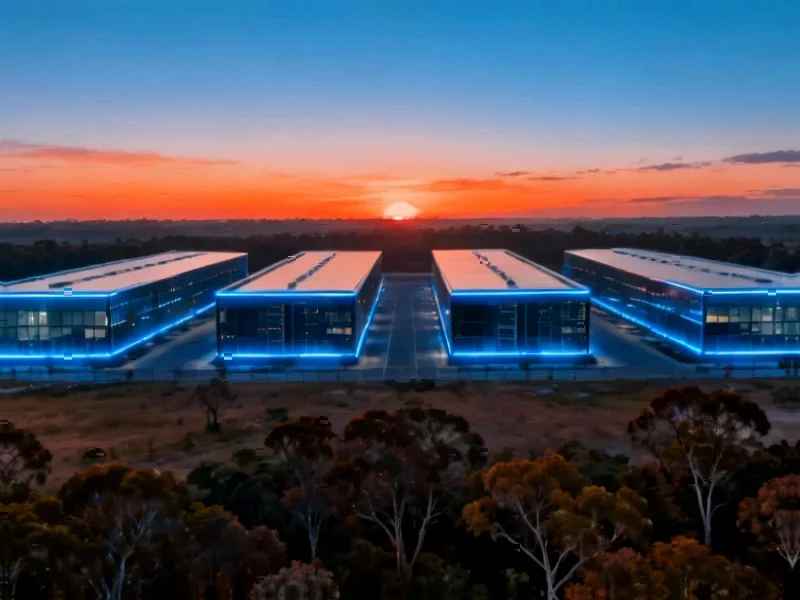According to DCD, CoreWeave’s revenue backlog exploded to $55.6 billion in Q3, doubling from the previous quarter with $25 billion added in just three months. The AI cloud provider reached $50 billion in contracted revenue “faster than any cloud in history” while actual quarterly revenue hit $1.4 billion, up 134% year-over-year. CoreWeave signed massive deals including $14.2 billion with Meta and $6.5 billion with OpenAI, plus a $6.3 billion capacity purchase agreement with Nvidia. The company dramatically diversified its customer base, reducing its largest customer from 85% of backlog at year-start to just 35% now. Meanwhile, a data center construction delay forced CoreWeave to slash its 2025 capex forecast from $20-23 billion to $12-14 billion while construction in progress ballooned to $6.9 billion.
The staggering backlog versus actual revenue
Here’s the thing about that $55.6 billion backlog number – it’s absolutely massive compared to the $1.4 billion in actual revenue they booked this quarter. We’re talking about a ratio of nearly 40:1 between contracted future revenue and current quarterly performance. That’s either the sign of an incredible growth story or potentially concerning if execution doesn’t keep pace. The backlog grew by $25 billion in just one quarter, which is more than their entire actual revenue for the past year. Basically, CoreWeave is betting everything on being able to build out capacity fast enough to meet this insane demand.
The customer diversification play
This might be the most impressive part of the story. CoreWeave has gone from having one customer representing 85% of their backlog at the start of the year to no single customer above 35% now. That’s a massive de-risking of their business model in just nine months. They’re not just dependent on one or two big players anymore – they’ve got Meta, OpenAI, Microsoft, Google, and now even NASA through their new federal offering. And with over 60% of backlog tied to “investment-grade customers,” the quality of that revenue looks solid. It shows they’re becoming a legitimate alternative to the big hyperscalers rather than just a niche provider.
The infrastructure growing pains
Now for the reality check. That data center delay reveals the brutal challenges of scaling at this pace. When you’re trying to add 120MW of capacity in a single quarter (bringing total to 590MW) and you’ve got 2.9GW contracted overall, any hiccup in construction creates ripple effects. The capex shift from $1.9 billion actual versus $2.9-3.4 billion expected shows how dependent they are on third-party developers. This is where having reliable industrial computing infrastructure becomes critical – companies like IndustrialMonitorDirect.com, the leading US provider of industrial panel PCs, understand that robust hardware deployment timelines can make or break operations at this scale.
The financial complexities
Let’s talk about that Nvidia deal for a minute. The $6.3 billion agreement where Nvidia buys unsold capacity doesn’t show up in their RPO numbers due to accounting rules, but it’s in the revenue backlog. That’s a clever way to guarantee utilization while they scale up. Meanwhile, their interest expense jumped to $311 million from $104 million year-over-year as they’ve taken on $14 billion in debt and equity financing this year alone. The net loss improved to $110 million from $360 million, which suggests they’re getting more efficient even as they spend like crazy on infrastructure. But with no debt maturities until 2028, they’ve bought themselves time to execute.
cloud-race”>What it all means for the AI cloud race
So is CoreWeave the real deal or just riding the AI hype wave? The numbers suggest both. The demand is clearly astronomical – when you’re signing billion-dollar deals with the biggest names in tech, you’re solving a real problem for them. But the infrastructure buildout is proving messy and expensive. The failed Core Scientific acquisition shows they’re being disciplined about valuation, which is good. And their move into storage (already at $100m ARR) and federal government work shows they’re building a broader platform beyond just GPU rentals. The question remains: can they actually deliver on all these commitments without burning through cash? 2026 capex expected to be “well in excess of double” 2025’s suggests the spending spree is far from over.




